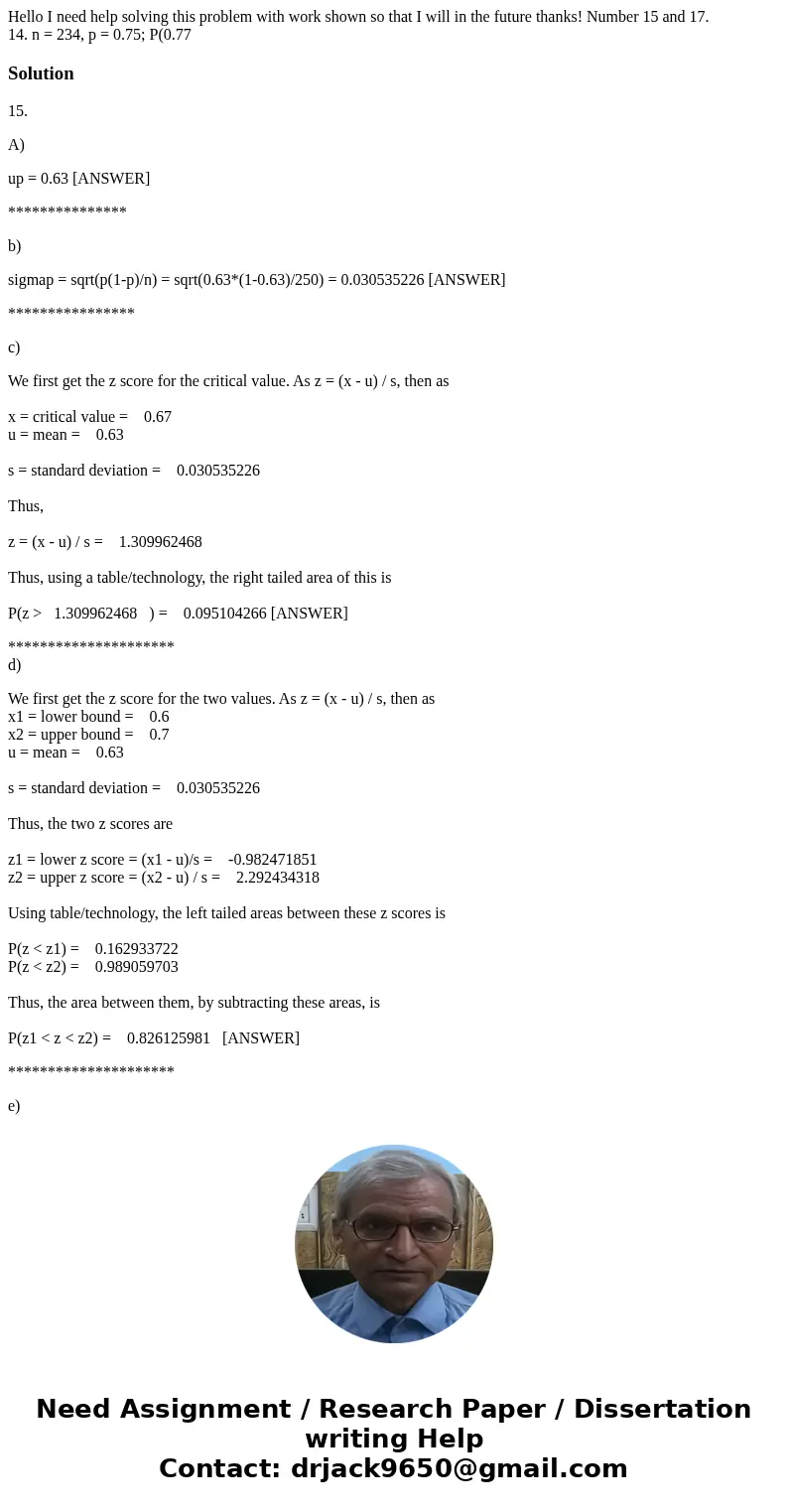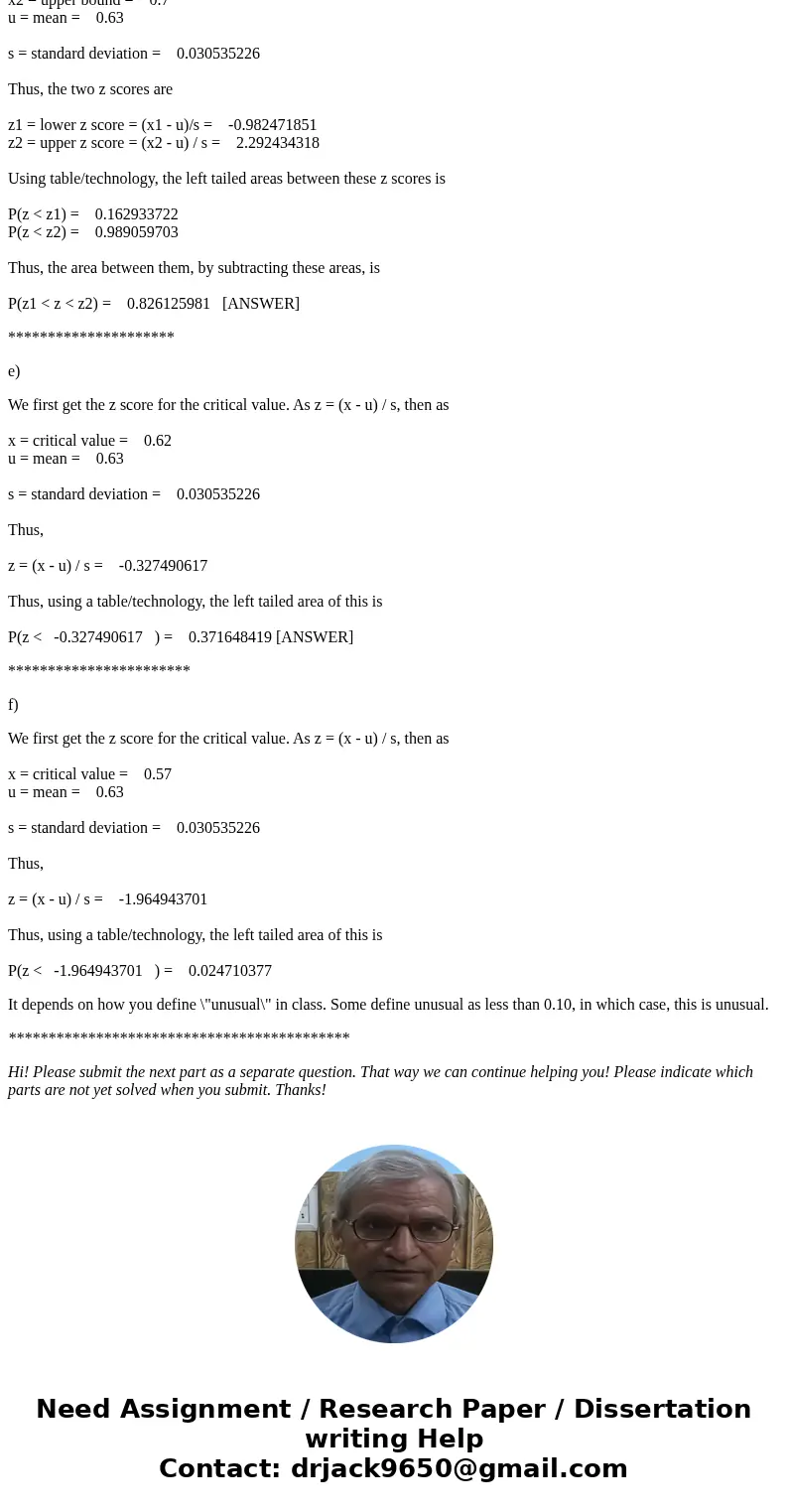Hello I need help solving this problem with work shown so th
Solution
15.
A)
up = 0.63 [ANSWER]
***************
b)
sigmap = sqrt(p(1-p)/n) = sqrt(0.63*(1-0.63)/250) = 0.030535226 [ANSWER]
****************
c)
We first get the z score for the critical value. As z = (x - u) / s, then as
x = critical value = 0.67
u = mean = 0.63
s = standard deviation = 0.030535226
Thus,
z = (x - u) / s = 1.309962468
Thus, using a table/technology, the right tailed area of this is
P(z > 1.309962468 ) = 0.095104266 [ANSWER]
*********************
d)
We first get the z score for the two values. As z = (x - u) / s, then as
x1 = lower bound = 0.6
x2 = upper bound = 0.7
u = mean = 0.63
s = standard deviation = 0.030535226
Thus, the two z scores are
z1 = lower z score = (x1 - u)/s = -0.982471851
z2 = upper z score = (x2 - u) / s = 2.292434318
Using table/technology, the left tailed areas between these z scores is
P(z < z1) = 0.162933722
P(z < z2) = 0.989059703
Thus, the area between them, by subtracting these areas, is
P(z1 < z < z2) = 0.826125981 [ANSWER]
*********************
e)
We first get the z score for the critical value. As z = (x - u) / s, then as
x = critical value = 0.62
u = mean = 0.63
s = standard deviation = 0.030535226
Thus,
z = (x - u) / s = -0.327490617
Thus, using a table/technology, the left tailed area of this is
P(z < -0.327490617 ) = 0.371648419 [ANSWER]
***********************
f)
We first get the z score for the critical value. As z = (x - u) / s, then as
x = critical value = 0.57
u = mean = 0.63
s = standard deviation = 0.030535226
Thus,
z = (x - u) / s = -1.964943701
Thus, using a table/technology, the left tailed area of this is
P(z < -1.964943701 ) = 0.024710377
It depends on how you define \"unusual\" in class. Some define unusual as less than 0.10, in which case, this is unusual.
*******************************************
Hi! Please submit the next part as a separate question. That way we can continue helping you! Please indicate which parts are not yet solved when you submit. Thanks!


 Homework Sourse
Homework Sourse